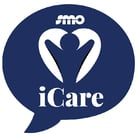.jpg?width=1000&height=667&name=Blog%20Detail%20Image%20(9).jpg)
The term "green cleaning" continues to carry more weight and meaning over the past few years. At its inception, green cleaning was not well defined and not firmly supported by many within the cleaning industry. During its early stages green cleaning was little more than a buzz phrase that indicated some limited effort was being made to clean in a more environmentally friendly way. Things have changed. Green cleaning is now a thriving reality supported by industry organizations as well as advancements in technology.
Why does green cleaning matter? What advantages does it provide?
Reduction in Waste
Utilization of green cleaning products and methods can significantly reduce the amount of waste produced by a cleaning operation. This can include the following:
- Use of chemical dispensing stations to reduce the use---and waste---of chemicals and water
- Use of microfiber cleaning products (towels, wipes, etc.) that can be washed and reused
- Reduction in the use of standard paper products helps reduce the burden of trash disposal
Better Control of Cleaning Supplies
A cleaning operation that follows green cleaning protocols will typically have better control over their selection of cleaning equipment and supplies. Cleaning operations can now easily verify the integrity of green products by looking for applicable certifications. Advantages will include....
- Purchase of cleaning equipment that has been independently certified as "green". This would include vacuums, burnisher, scrubbers, electrostatic systems, and more.
- Selection of cleaning supplies that carry green certifications such as the "Green Seal" and/or that have been certified by the Environmental Protections Agency (EPA "Safer Choice"). These products and supplies would include: microfiber products, disinfectants, general purpose cleaners, carpet and flooring cleaners, hand soaps, etc.
To earn a green certification the manufacturer must submit a complete listing of all ingredients contained within their cleaning product. The effectiveness of that product is also verified by putting it to several industry-standard cleaning tests. This ensures that you will be buying a product that is truly green and that it will do the job you need it to do.
Reduced Environmental Impact
As the protection of our environment continues to gain priority it is becoming increasingly important that cleaning operations take on their share of responsibility. Use of green cleaning methodologies within your facility will produce benefits that extend beyond your property. Those benefits can be far-reaching and can include....
- Reduction in the amount of waste that your facility produces
- Use of green-certified products reduces the hazards associated with use of toxic chemicals
- Reduction in the use of volatile organic compounds (VOC's) improves the quality of air (indoor and outdoor)
- Increased use of cleaning products that are biodegradable
A Health and Morale Booster
Implementing a green cleaning program can help ensure that you are providing a clean and healthy environment for your facility's occupants and visitors. Going "green" can also provide tangible evidence that you are truly committed to providing services that are competitive and sustainable. Both impacts can be real morale and confidence boosters.
What Is a LEED Facility and Why Is It Important?
Being a LEED facility is highly important for several reasons:
-
Environmental Sustainability: LEED facilities are designed and operated with a strong emphasis on reducing environmental impact. They prioritize energy efficiency, water conservation, waste reduction, and the use of sustainable materials. By achieving LEED certification, a facility demonstrates its commitment to sustainability and contributes to mitigating climate change.
-
Cost Savings: LEED facilities are designed to be energy-efficient and resource-conscious, leading to significant cost savings in the long run. By implementing sustainable practices such as efficient HVAC systems, optimized lighting, and water-saving fixtures, a LEED facility can reduce its operational expenses related to energy, water, and waste management.
-
Health and Well-being: LEED certification also focuses on promoting occupant health and well-being. LEED facilities prioritize indoor air quality, access to natural light, and the use of non-toxic materials, creating healthier and more comfortable spaces for occupants. Improved indoor environmental quality can enhance productivity, reduce sick days, and enhance overall occupant satisfaction.
-
Marketability and Reputation: LEED certification is globally recognized as a mark of environmental responsibility and sustainability leadership. Being a LEED facility can enhance a company's reputation, attract environmentally conscious clients, and differentiate it from competitors. LEED-certified buildings often command higher rental and resale values due to their sustainable features.
-
Regulatory Compliance: In many jurisdictions, green building standards and regulations are becoming more stringent. Having a LEED-certified facility can help ensure compliance with environmental regulations and avoid potential penalties or legal issues related to building performance and resource consumption.
-
Corporate Social Responsibility: Adopting sustainable practices and achieving LEED certification aligns with a company's corporate social responsibility goals. It demonstrates a commitment to reducing environmental impact, conserving resources, and contributing positively to the community and the planet.
Overall, being a LEED facility offers numerous benefits, including reduced environmental footprint, cost savings, improved occupant health, marketability, regulatory compliance, and fulfillment of corporate social responsibility objectives. It is a valuable investment that supports sustainable development and sets an example for others to follow.
A commitment to green cleaning…..it really does matter.



.jpg?width=220&height=135&name=Blog%20Listing%20Image%20(5).jpg)
.png?width=220&height=135&name=Untitled%20design%20(8).png)

.png?width=180&height=138&name=Untitled%20design%20(25).png)


